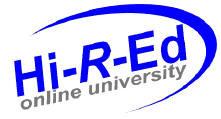Course
Anthropometric Measures

|
Course Anthropometric Measures |
|
| Height/Weight |
Body Fat Lean Body Mass Summary Resources Assessment Quiz Proposed Anthropometry To Characterize Altered Body Patterns AACTG A5154 Measurements
Introduction Anthropometry literally means the measurement of humans. The use of anthropometry as a means to evaluate a client’s dimensions and body composition is straightforward and non-invasive and has the advantage of using relatively inexpensive and portable materials. Standardized techniques improve the precision and accuracy of measures. Personnel taking such measures should be trained in standardized techniques with appropriate equipment prior to working with clients. The course participant should bear in mind that anthropometry is only one of many means of evaluation. Used in conjunction with additional physical examination, medical profile (disease status, medications that may compromise nutritional status, and others), laboratory evaluation, and psychosocial/economic parameters, the clinician is better equipped to develop a workable plan with their client for rehabilitation, maintenance, or enhancement of nutritional stores and function. This course will highlight the more typical measures of body dimensions. Included are tables that can be used to calculate additional body composition information and evaluate results. Sources of error are listed in each section. The course should take approximately 1 to 1.5 hours to complete. We highly recommend that you take the opportunity to partner with someone to practice measures as described in this course. Let us begin! Objectives: Upon completion of this course the learner will be able to:
Continue on to If you've already read through the course, proceed on to the
|